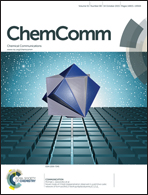PET tracers for imaging brain α7 nicotinic receptors: an update
Abstract
Positron emission tomography (PET) molecular imaging of brain targets is a powerful tool to diagnose, follow up, and develop treatments and personalized medicine for a number of acute and chronic brain disorders. The availability of β+ emitter tracers labelled with [11C] or [18F] having optimal characteristics of affinity and selectivity for alpha-7 nicotinic receptors (α7R) has received considerable attention, due to the major implication of these receptors in brain functions. The aim of this review is to identify the interest and need for the in vivo exploration of α7R by PET molecular imaging, which tools are currently available for this and how to progress.


 Please wait while we load your content...
Please wait while we load your content...